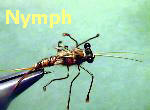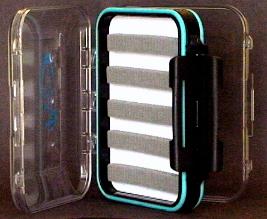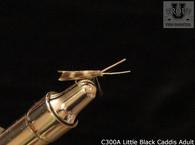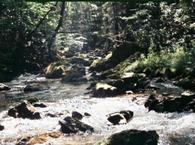 Nymphs General Information:
Nymphs General Information:
For fly fishing, stonefly nymphs are very important in fact, they are more important than the adults. The reason is that they make up a major portion of a trout’s diet. There are several species of stoneflies, but the species of the Periodidae family are the most important. Within this family, the basic color and shape does not vary much, however, there are some differences in their size.
The Little Yellow Stonefly, (Yellow Sally) is of this family and like all other stoneflies; they crawl out of the water to hatch. The migration route takes them from their home between or under the rocks on the floor of the stream to the banks where they will hatch. This action allows the trout to eat them in great numbers. As long as the little yellow stoneflies remain in or under rocks they are safe from the trout unless they become dislodged in some way and drift downstream.
Since there are so many species of stoneflies, their hatches occur often, more so than most anglers realize. Therefore, it is wise to try the stonefly nymphs almost anytime throughout the entire year especially since the trout will eat them whether or not they are hatching. The little yellow stonefly provides the best opportunity for anglers as they often hatch during the daytime hours and some may hatch during the early evenings in warm weather. Other species however, will hatch only during the evenings.
Stoneflies must have clean fast flowing waters to live. Some of the stoneflies will crawl up on the stones projecting above the water to hatch but most of them will migrate to the banks to hatch. Upon reaching the banks, they will abruptly shed their shucks and fly away. The several species of the little yellow stoneflies hatch at different times of the day with the Yellow Sally species hatching predominately in the afternoons. Warmer weather will sometimes delay the hatch to late afternoon. Although the nymphs may migrate all day, the best opportunity for the anglers will be later in the day.
Nymphs Presentation Information:
Avoid walking down through the water preferring to ambush the trout from the banks so as not to spook the trout. As you may already know, the trout can hear you through their lateral line as you walk on the bank close to the water so be very careful with your approach. Where the vegetation allows, cast from the bank. When it becomes necessary to wade into the water do so as quietly as possible without kicking the rocks, staying about a rods length away from the bank. Fish the nymph down and across allowing the nymph to swing back to the bank slowly dragging the nymph along the bottom as it goes toward the bank. Obviously, as with all nymphs, it is important to keep the nymph on the bottom so use weights as appropriate.
As you slowly continue along the bank, cast frequently to cover the water. To increase your coverage of the water, use a reach cast to cast 10 or 15 feet into the midstream. Slowly drag the fly toward the bank lifting the rod tip frequently allowing the nymph to drift a few inches toward the bank with each lifting of the rod.
See the new double sided fly boxes.
 Nymphs General Information:
Nymphs General Information: 





